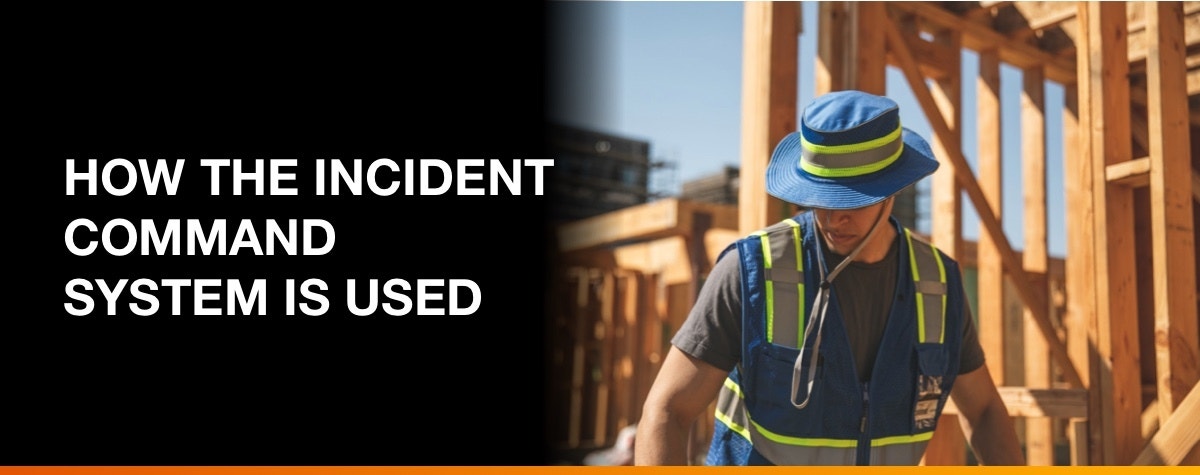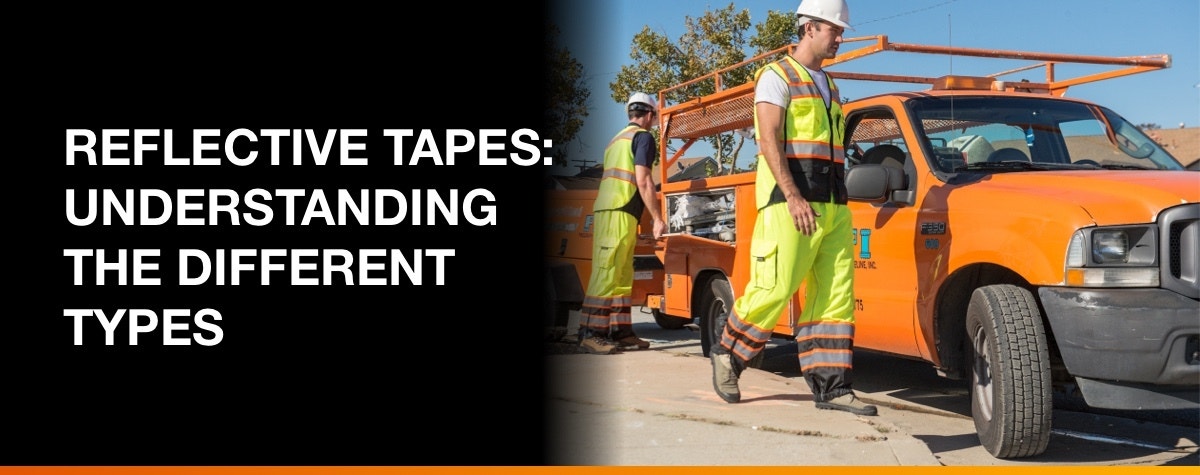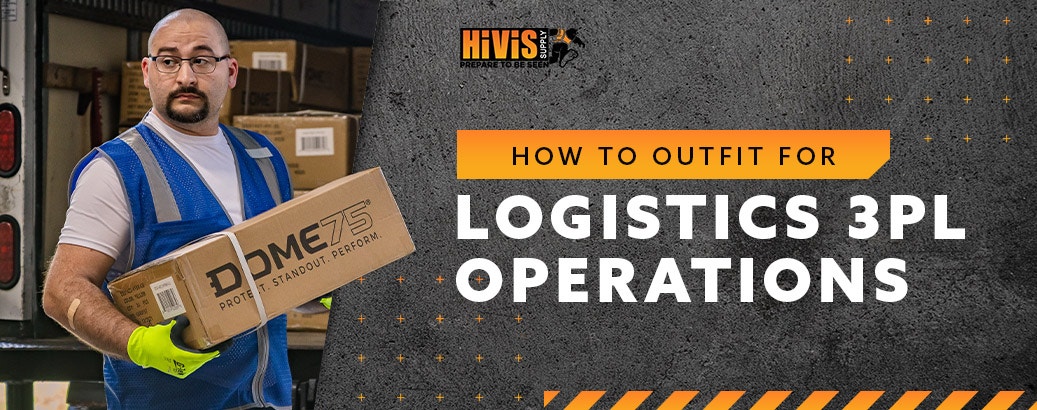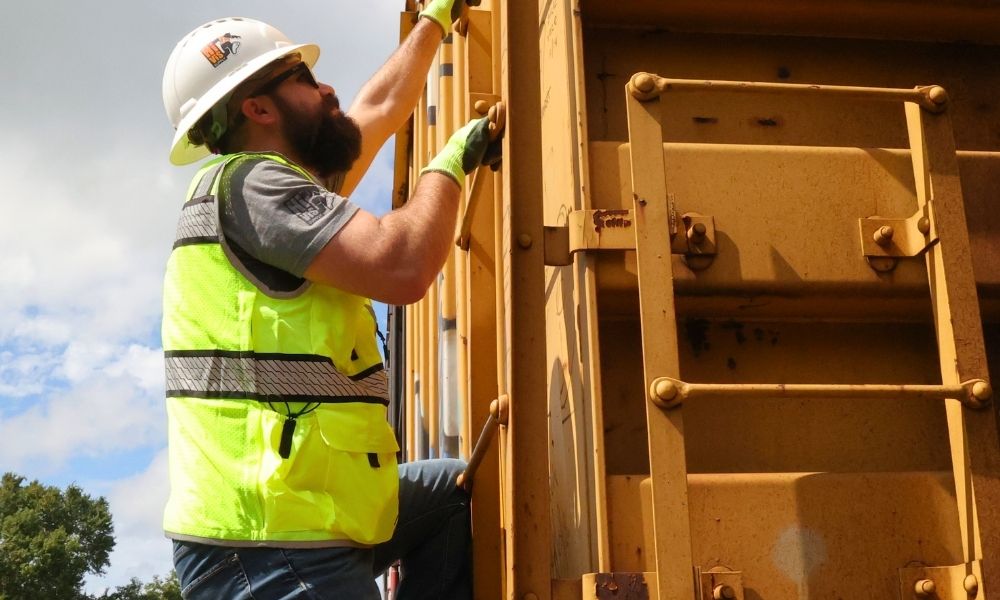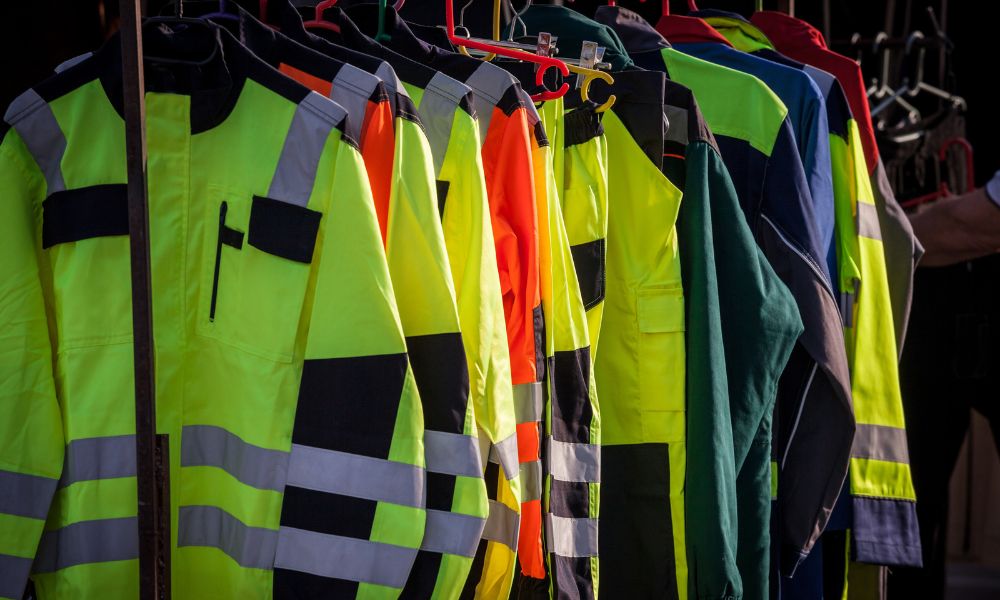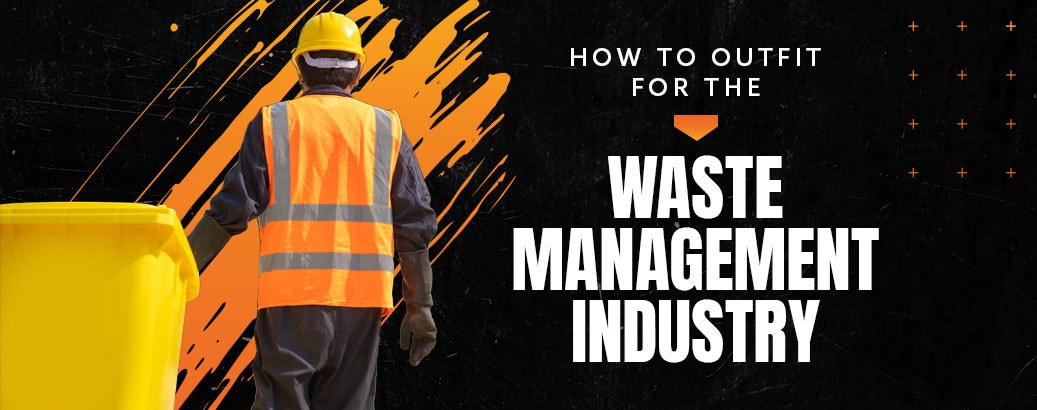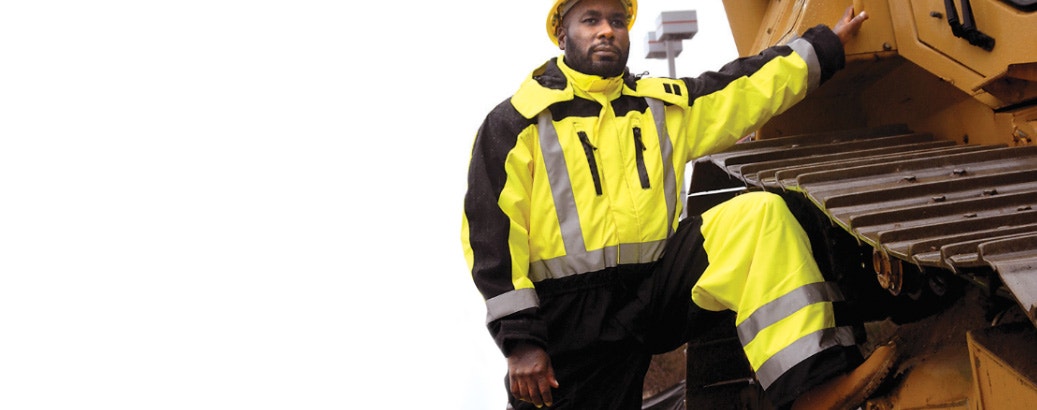Using Color Identification When High Visibility Isn't Enough: Enhanced Visibility Apparel Explained
- By HiVis Supply
- Nov 25, 2020
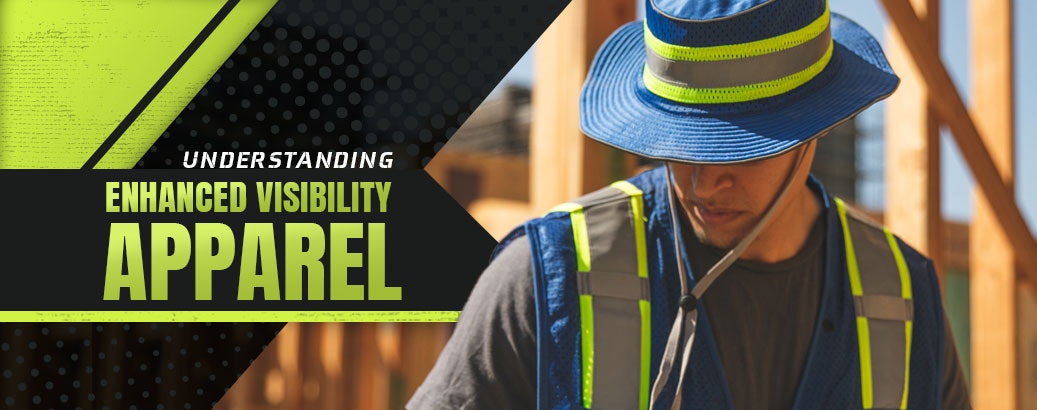
People wear all kinds of apparel to make themselves stand out in a crowd and differentiate their looks from others. A flashy pair of sunglasses, a well-cut jacket, a killer pair of boots—many apparel elements can create an impressive appearance. But creating visual distinction for yourself can be a lot more important in the workplace, where lives are often on the line.
That’s the idea behind enhanced visibility apparel. These vests, jackets, headwear, and more feature colorful and reflective designs that attract the human eye and make workers easier to see. Beyond that, however, they also offer big advantages for identifying employees and their functions more easily. In this article, we’ll talk about the many uses of enhanced visibility apparel to create a safer and more organized workplace. To kick things off, we’ll talk a little bit more about exactly what enhanced visibility apparel is.


What Is Enhanced Visibility Apparel?
Enhanced visibility apparel is workwear that has many of the same features and functions of traditional ANSI compliant high visibility safety apparel, but instead of a fluorescent Lime, Orange, or Red background color, it utilizes standard colors to help the wearer stand out. It is an excellent option when working in areas where ANSI rated safety clothes are not required, but visibility is still important. Another big benefit to enhanced visibility apparel is the ability to use the wide array of colors to easily identify workers by their department and/or job function. Many of the features that are often associated to enhanced visibility clothing includes:
- Easily identifiable, eye catching colors
- Reflective striping
- Contrasting colors
- Clear pockets for ID badges
- Printed legends—such as “Security,” “Staff,” or a company name
Each feature contributes to the ultimate goal of making workers stand out visually. However, the visual characteristics of enhanced visibility apparel also lend themselves well to creating a safer and more organized workplace.
ANSI-Rated High Visibility vs. Enhanced Visibility
It is crucial to understand that there is a difference between ANSI-compliant high visibility safety apparel and enhanced visibility safety apparel. Although we have pointed out many similarities, there are some distinct details about enhanced visibility apparel that cannot be overlooked:
- It is not compliant for use as an ANSI 107 Type R or Type P garment and cannot be designated as a Class 2 or Class 3 performance rating
- It can qualify as an ANSI 107 Type O Class 1 garment if it's properly designed to include the minimum amount of fluorescent background material (217 square inches) and retro reflective striping (155 square inches)
If you’re looking for ANSI-rated high visibility gear, see our full selection of high visibility workwear. If you are looking for work apparel options that offer quick visual identification then please read on for more information.


Some workplace environments, such as road work, OSHA, or other regulatory agencies, require a specific level of ANSI-rated high visibility gear. All others are covered by OSHA’s “general duty clause,” which states that employers have to provide a workplace environment that addresses and mitigates known hazards. It’s the responsibility of each employer to learn about and implement the relevant standards for their industry.
Types of Enhanced Visibility Apparel
Enhanced visibility apparel comes in many different types, from vests to t-shirts, to hats and beyond. Here are some of the most common types that you’ll see used in the workplace:
- Enhanced Visibility Vests: Vests, usually sleeveless, offer a wide range of benefits through enhanced visibility features. They’re budget-friendly, easy to take on and off, and comfortable to wear. Enhanced visibility vests are also often available in the widest variety of colors, and their large surface area makes them easily visible and distinguishable.
- Enhanced Visibility Headwear: Headwear is another key type of enhanced visibility gear. Enhanced visibility hats are the most common type, but headwear accessories like enhanced visibility sun shields that fit over a hard hat are also popular.
- Enhanced Visibility Jackets and Sweatshirts: An enhanced visibility jacket or sweatshirt helps provide visibility and color differentiation even in colder weather when insulated clothing is necessary. These garments include standard visibility features on rugged designs that provide serious insulation and warmth.
- Enhanced Visibility T-Shirts: For warmer work environments, an enhanced visibility t-shirt is an ideal solution. Created from advanced moisture-wicking polyester mesh fabrics, these t-shirts provide enhanced visibility color options and professional-grade comfort for tough jobs.
These are only some of the most common types of enhanced visibility work clothing. Awareness of this new product segment, and an understanding of where it can be used in the workplace, has made it one of the fastest-growing categories in safety apparel. The product offering is quickly expanding.


Color Identification for Enhanced Visibility Apparel
There are many work environments that do not require ANSI compliant high visibility safety apparel; but they can benefit more from their workers being equally seen and identified. If you need a simple visual system to instantly differentiate employees by function and role, a color-coded identification scheme can be a useful organizational tool. Here are some ways in which color identification codes can benefit workplace safety and efficiency:
- New employees can easily identify others by role and find a supervisor more quickly. This helps employees access help when they need it most, as well as learn and internalize the structure of workplace roles.
- Supervisors and other employees can spot when employees are in areas they don’t have the proper certifications for. This is critical for preventing accidents and staying in compliance.
- Contractors and subcontractors can be more easily differentiated from employees and each other when working on the job site. This can be majorly helpful when dealing with a large number of contractors and subs, as is frequently the case on construction sites—see the next section.
- Non-employees can quickly identify employees if they require help. This aspect is particularly important for public-facing workplaces with large numbers of non-employees present such as retail stores and public events.
We’ve examined the principles that color identification seeks to achieve. Now, let’s look at how these principles can be applied in many different kinds of workplaces.
Workplaces That Use Enhanced Visibility Apparel
You’ll see color-coordinated enhanced visibility apparel used in many different kinds of workplaces. From heavy industry to disaster relief, to aviation, enhanced visibility apparel and its wide array of color options provide a great tool for coordinating various roles within the workplace. These are some of the ways that various work environments use enhanced visibility apparel and color coordination:


- Construction: Construction sites often feature a large number of workers with substantially different roles, including contractors and subcontractors. Site managers need the ability to quickly and easily differentiate each of these classes of workers from one another. This helps prevent workers from entering unauthorized areas and is important for quickly identifying contractors.
- Food and Beverage Manufacturing: Avoiding cross-contamination is critically important in food and beverage manufacturing. That’s why some F&B manufacturing facilities use color-coded systems to differentiate food production employees by function. For example, a worker who handles raw chicken products shouldn’t also handle finished, packaged goods. Color-coded visibility clothing can help spot such out-of-place workers before they have the chance to cause contamination incidents.
- Aviation: An aviation field is a busy place with many different types of workers, each of them with a specific assignment and a rigorous set of safety practices to follow. From baggage handling to aircraft maintenance, every worker needs to be both clearly seen and easy to tell apart. For a perfect example, see the way that military aircraft carriers divide responsibilities into a series of color-coded assignment posts that are signified through different-colored shirts.
- Event Management: Public event management, such as concerts, sporting events, and conventions, often presents a hectic and fast-paced environment that requires employees to be easily available and differentiated from the general public. Color-coded identification clothing is a great solution. Stage crews might wear one color, usually black, while the security unit will wear another color and the vendors wear a third color. This makes them easy to tell apart and find when the need arises.
- Fulfillment and Logistics: Logistics facilities such as distribution centers need to run like well-oiled machines. That means every employee needs to understand and follow their role, as well as staying safe and seen. enhanced visibility clothing helps on both fronts, differentiating employees by job function while keeping them seen in an environment that often features heavy equipment like forklifts.
- Disaster Relief: Disaster relief efforts often utilize the incident command system, a hierarchical management structure that helps streamline decisions and planning efforts. ICS-based systems often utilize incident command vests, which feature different colors that help separate response workers by role and make them easy to tell apart for disaster victims.
The uses of color-coded enhanced visibility apparel aren’t limited to the industries we’ve discussed. Any workplace that requires quick action, heavy equipment, differentiated jobs, and/or special safety certifications can potentially benefit from a color identification system. All it takes is a solid plan and the right enhanced visibility apparel.
Enhanced Visibility Apparel from HiVis Supply
HiVis Supply is proud to bring our customers a full selection of the best-enhanced visibility apparel on the market today. We offer colored safety vests, hats, jackets, and much more—take a look:


- ML Kishigo B120 Series Economy Enhanced Visibility Mesh Identification Vest: A cost-effective enhanced visibility vest, made with breathable mesh fabric for all-day comfort and available in a selection of twelve vivid colors.
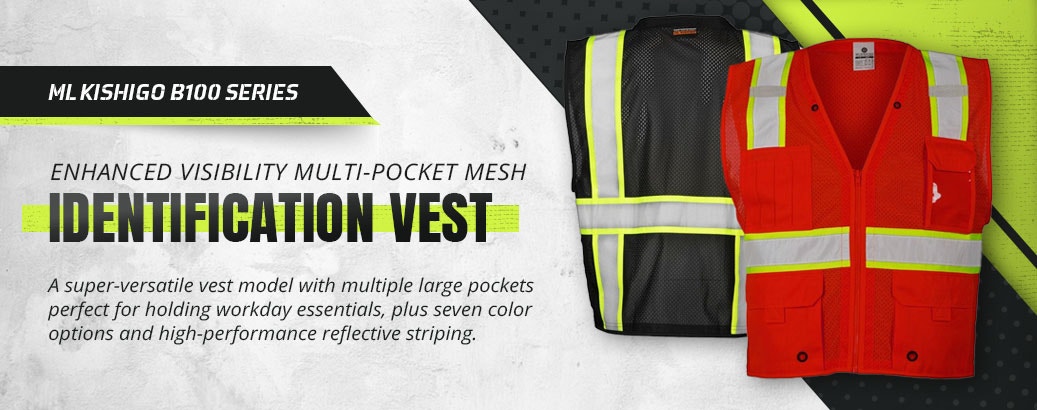

- ML Kishigo B100 Series Enhanced Visibility Multi-Pocket Mesh Identification Vest: A super-versatile vest model with multiple large pockets perfect for holding workday essentials, plus seven color options and high-performance reflective striping.


- ML Kishigo B200 Class 1 Contrasting Short Sleeve T-Shirt: An ANSI Class 1-rated hi vis t-shirt made from moisture-wicking microfiber polyester that keeps you dry and comfy throughout the workday. The classy black design helps hide dirt and keeps you looking great.


- ML Kishigo B22 Enhanced Visibility Series Full Brim Safari Hat: This action-ready hat features a full brim to provide serious sun protection. A band of reflective material creates a key visibility boost. Throw in a breathable mesh lining, and you’ve got the perfect summer work headwear.


- ML Kishigo B10/B12 Enhanced Visibility Series Hard Hat Sun Shield: Need head protection, sun protection, and enhanced visibility all at once? This sun shield is designed to fit over any cap-style hard hat and is perfect for construction and road work in hot conditions.


- GSS Safety 3100 Series Enhanced Visibility Identification Safety Vest: These non-ANSI vests are the perfect budget-friendly solution for color identification and enhanced visibility. With twelve different available colors and front and back ID holders, each vest is easy to customize to the safety needs of your workplace.
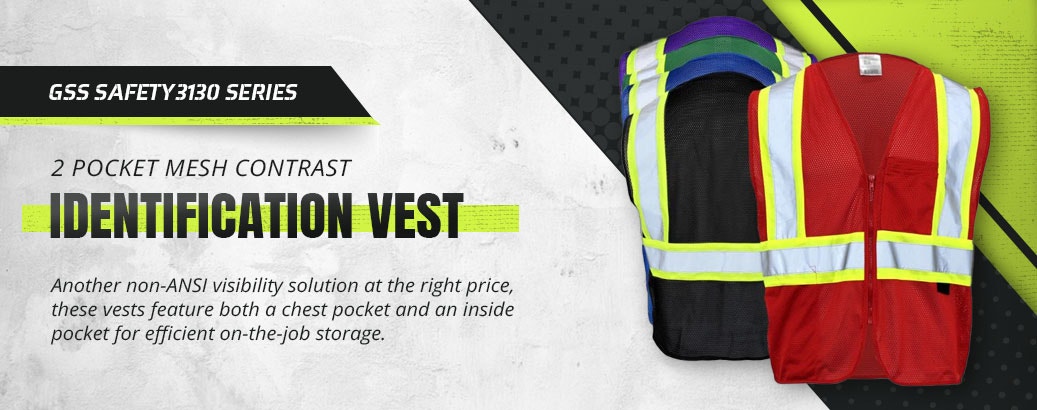

- Enhanced Visibility 2 Pocket Mesh Contrast Identification Safety Vest: Another non-ANSI visibility solution at the right price, these vests feature both a chest pocket and an inside pocket for efficient on-the-job storage. Made from a comfy polyester mesh and available in five colors, with two-inch silver reflective tape and contrasting trim.


- GSS Safety Enhanced Visibility Thermal Bomber Jacket: A basic but highly effective model of non-ANSI enhanced visibility jacket, it includes all of the key winter jacket features like a polyester shell and storm flap, plus two available colors and enhanced visibility reflective striping.


- GSS Safety 5123/5124 Enhanced Visibility Short Sleeve Black Bottom Safety T-Shirt: A hard-working t-shirt that’s perfect for hot work environments where you need an extra visibility boost. Breathable polyester mesh fabric helps control moisture, and reflective striping plus a black lower section provide a look that’s both visible and neat.




- GSS Safety 7013/7014 Enhanced Visibility Black Bottom Pullover Sweatshirt: This enhanced visibility sweatshirt provides another economical option that doesn’t sacrifice comfort or visibility. A polyester fleece material provides warmth for chilly days, while silver reflective tape makes sure you’re visible.
HiVis Supply also offers custom legend printing on almost all of our products. We provide both single-color and full-color imprinting that provides an instant boost to worker identification and puts a business on display where it matters most.
That’s just the beginning of the enhanced visibility apparel that HiVis Supply offers. Make sure you don’t miss our full selection of high visibility and enhanced visibility workwear and see our guide to the types of PPE for more crucial info on how to ensure that the right PPE is being used in your workplace.


